| Between Bonita Springs and Naples we did a quick detour to the
Corkscrew Swamp Sanctuary. Here is a mini privately-run park with a visitor centre
and a boardwalk through a typical area of northern Everglades country. The
visitor centre has aquaria with examples of the local fish swimming about. Fish always
look miserable. | 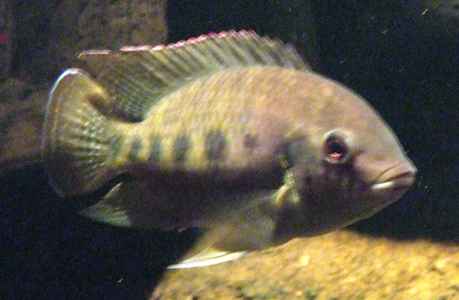 |
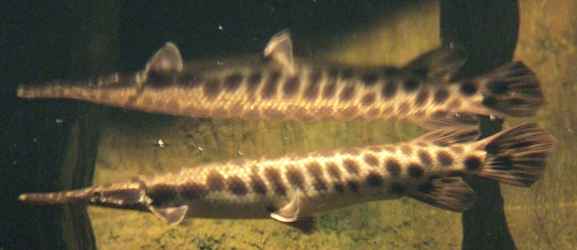 | This strange
looking fish is a gar and is quite common. The one at the top is a
reflection off the surface of the water. |
| There are several different environments depending upon how dry
the ground is. The driest areas are the pine flatwoods, home to the slash
pines, sabal palms and saw palmettos underneath. | 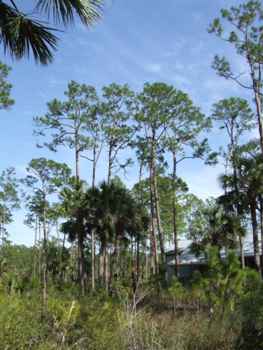 |
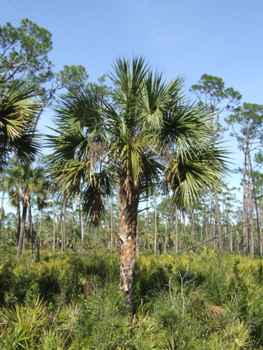 | This is the
sabal palm, one of the common trees in the drier parts of the Everglades.
These plants can tolerate occasional summer flooding. Long ago this was the
predominant environment in most of Florida. |
| The bark of the slash pine is very characteristic, making
identification easy. | 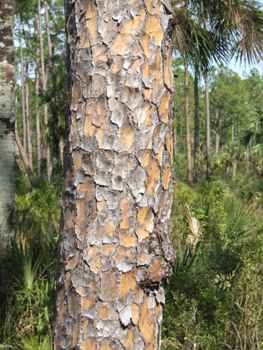 |
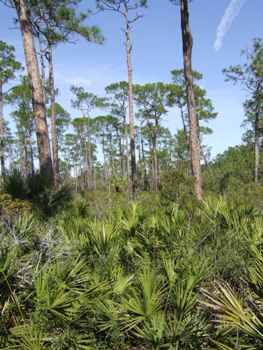 | The saw
palmettos are rather shorter and thrive when the higher canopy
disappears. This happens when hurricanes rip the leaves away or fire burns
them. |
| Some of the growth goes really wild here. We are moving into
wetter areas | 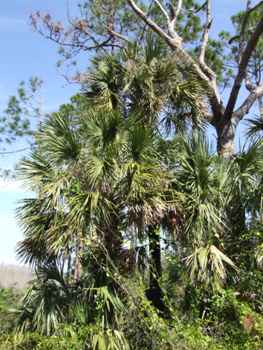 |
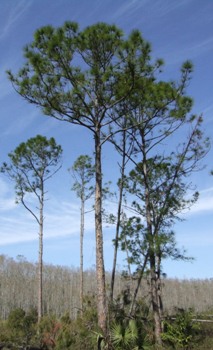 | As the ground
gets wetter the pines give way to willows and eventually cypress. It is
harder to distinguish between trees and shrubs at this time of year because most of the leaves are
missing. But later in the year you have the rains, heat and more mosquitos. Take your choice... |
| This is a much wetter area with real marsh plants in the
foreground and few trees. The mid ground is probably willow. | 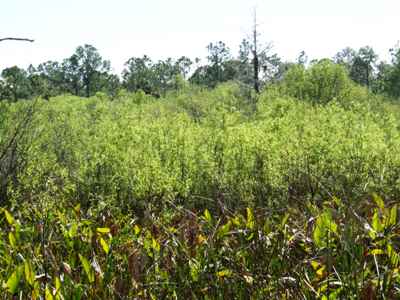 |
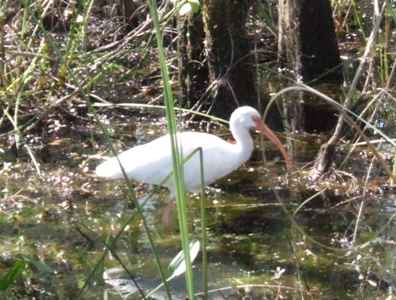 | White ibis are
one of the commonest birds. They often feed in small flocks. |
| The egret is also common here as it stalks around. | 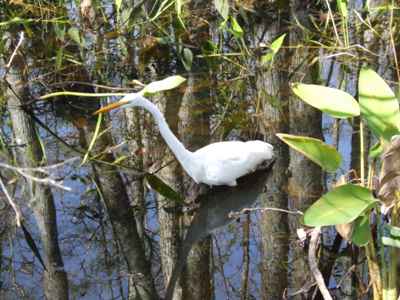 |
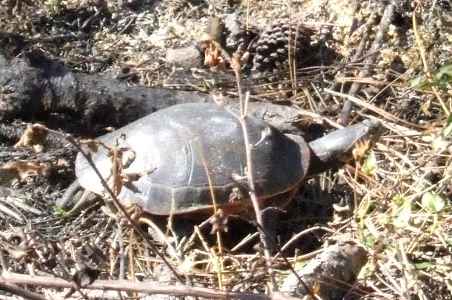 | Much harder to
spot in the wild are turtles. This one had just finished laying eggs and was
on its way back to the water. |
| Almost every tree supports a collection of bromeliads. We
weren't quite in the flowering season but this will be spectacular in a
month or so. | 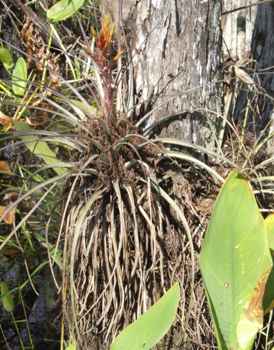 |
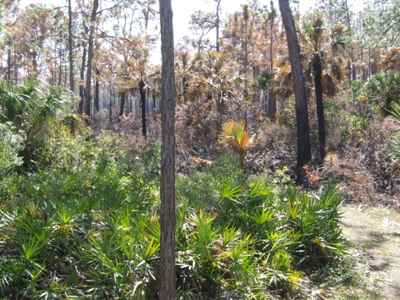 | I just like
the colours of this shot as the sun filters down through the canopy to the
more lowly plants below. |
| This is a really marshy area full of grasses and sedges which
have perhaps been flooded too much. Further over is a prairie-like field of
saw grass, the commonest plant in the Everglades. | 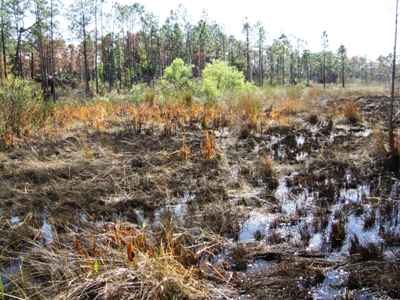 |
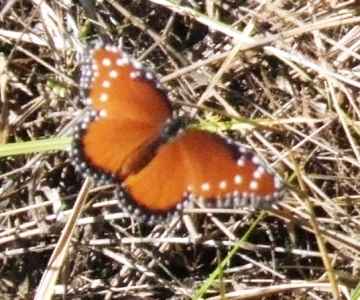 | A lucky shot
caught this butterfly. These are one of the hardest creatures to photograph. |
| This is the wet prairie of saw and other grasses. Although
it looks dry, it is in fact slowly flowing water underfoot, anything from
ankle to knee deep. | 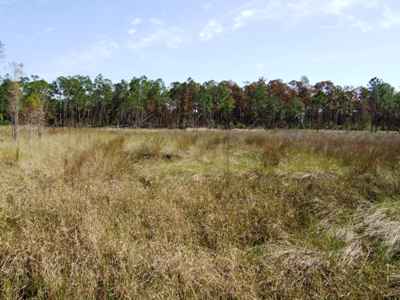 |
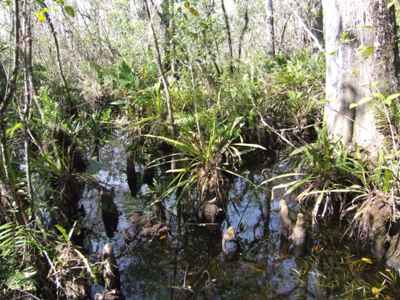 | Cypress 'knees',
whose function is not known, provide support for several types of tillandsia (air plants)
and other members of the bromeliad family. |
| At home water gets covered in fairy moss. This looks
similar but bigger, and is a member of a different family. | 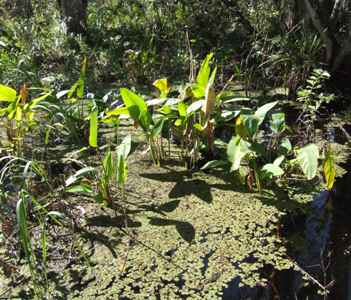 |
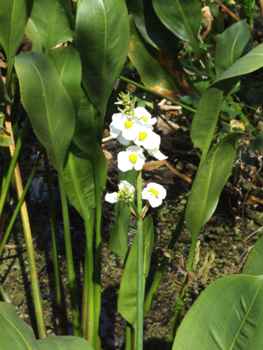 | Not sure what
this is called. |
| This is poison ivy with its characteristic three leaves, with the
central leaf on an extended stem. One to avoid. | 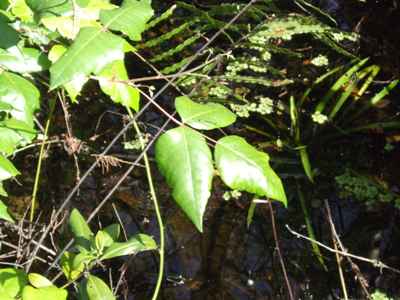 |
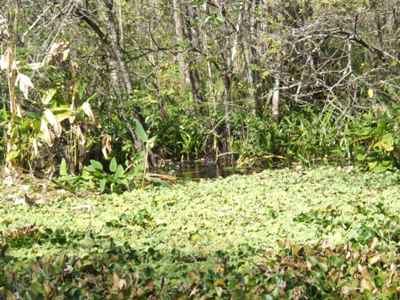 | This small lake
is covered by sea lettuce with a small pool of clear water in the centre of
the picture. In that water was a large male alligator with one of the
loudest bellows we've heard. Jan saw him, as he raised his head up out of
the water to do this, but didn't have a camera handy. |
| A wild red shouldered hawk sits on a branch and poses for the myriad
of cameras below. This is actually quite a sluggish bird most of the time,
rather than other raptors which spend their lives wheeling about the skies. | 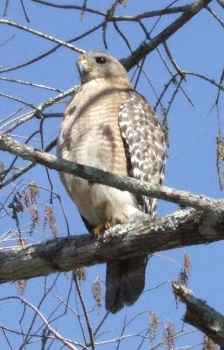 |
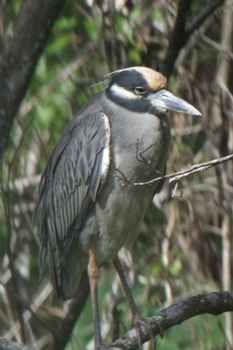 | The rangers had
set up a number of scopes around the park. Surprisingly some birds remained
still and in place for long periods. This is a yellow crowned night heron.
Not especially common. I photographed this using the scope as a lens -
sometimes it works! |
|